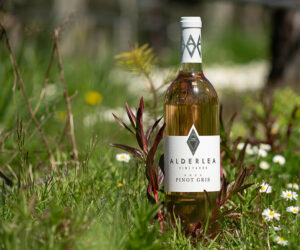Q
I have a question about sanitizing. I just mixed a fresh batch of potassium metabisulfite (1.5 oz. powder to 1 gallon water) to sanitize my equipment, and this latest batch has very little smell. Until now, every batch I’ve made has smelled quite powerful. I know that you’re supposed to replace the liquid when it loses its smell and that the solution will lose its strength over time. Will the dry powder also lose its strength over time? I purchased this sulfite powder six months ago, and I used this new solution to start a new kit, but now I’m wondering if it’s okay to use.
Dan Harazim
East Hampton, Connecticut
A
You’re right to suspect that both the potassium metabisulfite powder and solution can lose their power over time. The solution, which you make by mixing the powder with water, is particularly unstable. All that antioxidant power we love means that when it comes in contact with air, which it usually does in a storage container (despite our efforts to prevent this), it’s getting oxidized. This means that it is losing some of its power. As sulfur dioxide is soluble only at relatively low temperatures, the liquid solution is also particularly sensitive to high storage temperatures. Store it for a week at 65 ºF (18 ºC) or above and it’s guaranteed that you will lose a significant amount of microbe-killing and antioxidant power.
How strong your solution smells can be an indicator of strength, but it is an inconsistent one as we all have different tolerances to the odor. I suggest trying to get a handle on the strength of your solution by measuring the free sulfur dioxide.
Most winemaking books suggest using a sanitizing solution made out of water, citric acid and potassium metabisulfite, where the free SO2 is around 75-100 mg/L and the pH of your solution is under 2.9. The dry potassium metabisulfite powder itself can also lose its strength over time with exposure to air, and hence, its ability to retard microbial growth and oxidation. Because of this, it’s wise to buy the powder in small pouches or bags that make sense for your scale of winery and then to only make up as much liquid solution as you will need for any given job. This way you have a good feel for the amount of sulfur dioxide you really have in that solution. An aqueous solution of potassium metabisulfite powder can lose as much as half of its strength in two weeks when stored at 65–70 ºF (18–21 ºC).
For your current dilemma, I suggest getting a new batch of powder if it can’t be used to make a solution that is strong enough for your winemaking needs. Small pouches and cool, if not cold, storage conditions for liquid and powdered potassium metabisulfite can make a big difference in the life of your sulfur dioxide.
Q
Can Lambrusco wine be refrigerated for several months and then safely kept on a wine rack? What is the expiration time frame for this wine?
Jeanne Considine
Boulder, Colorado
A
Hmmm . . . Lambrusco is not one of those wines typically made to age for decades and decades, which leads me to believe that your wine, which has been shuttled from fridge to shelf might not be the happiest bottles in the business. Let’s first discuss the wine.
Lambrusco is the name of both a grape and the region in Italy where it comes from. Italian Lambrusco is typically produced from the clay soil vineyards in and around the Po River Valley near Modena. Though originally from the Appenines, Lambrusco can also be found elsewhere in Italy, namely in Sicily and the Alto Adige. The grape has been transported, obviously, to the new world, and has taken root in places like Argentina, the Central Valley of California, as well as in the vineyards of curious backyard hobbyists.
Being that I don’t know where your grapes are from or how your wine was made, it’s difficult to determine how it will age or how well it has stood up to the wide temperature swings. If it was grown and made in the typical Italian style, I might give it three years for its window of drinkability. As always though, other factors of how the wine was made could shorten or extend its lifespan.
Alcohol, acid, color, sugar, tannin and an absence of oxygen are all important for a wine to age for many years. As a general guideline: Dry white wine that is under 11% alcohol, with a pH above 3.6 and has been stored incorrectly, either in the winery or in the wine cellar, will meet its demise much sooner than a robust red with opposite characteristics.
As for the bottles that you’ve kept in the fridge for several months — does several mean 3 or 13? — proceed with caution. Wide temperature swings are probably second only to oxygen exposure in causing the premature deaths of many of the world’s zealously refrigerated wines. Wine is a complex chemical soup and temperature hugely affects the rates and types of aging reactions that take place within the closed environment of a bottle. Not only that, but the relatively rapid expansion of the liquid as it comes back up to room temperature has been observed to push corks out of bottles or to cause leaks, enabling oxygen to make its insidious ingress. All this being said, you won’t know until you try it. I don’t ever recommend storing any wine in a fridge for longer than a couple weeks but it’s certainly worth a try to see what happened to these Lambrusco experiments.







